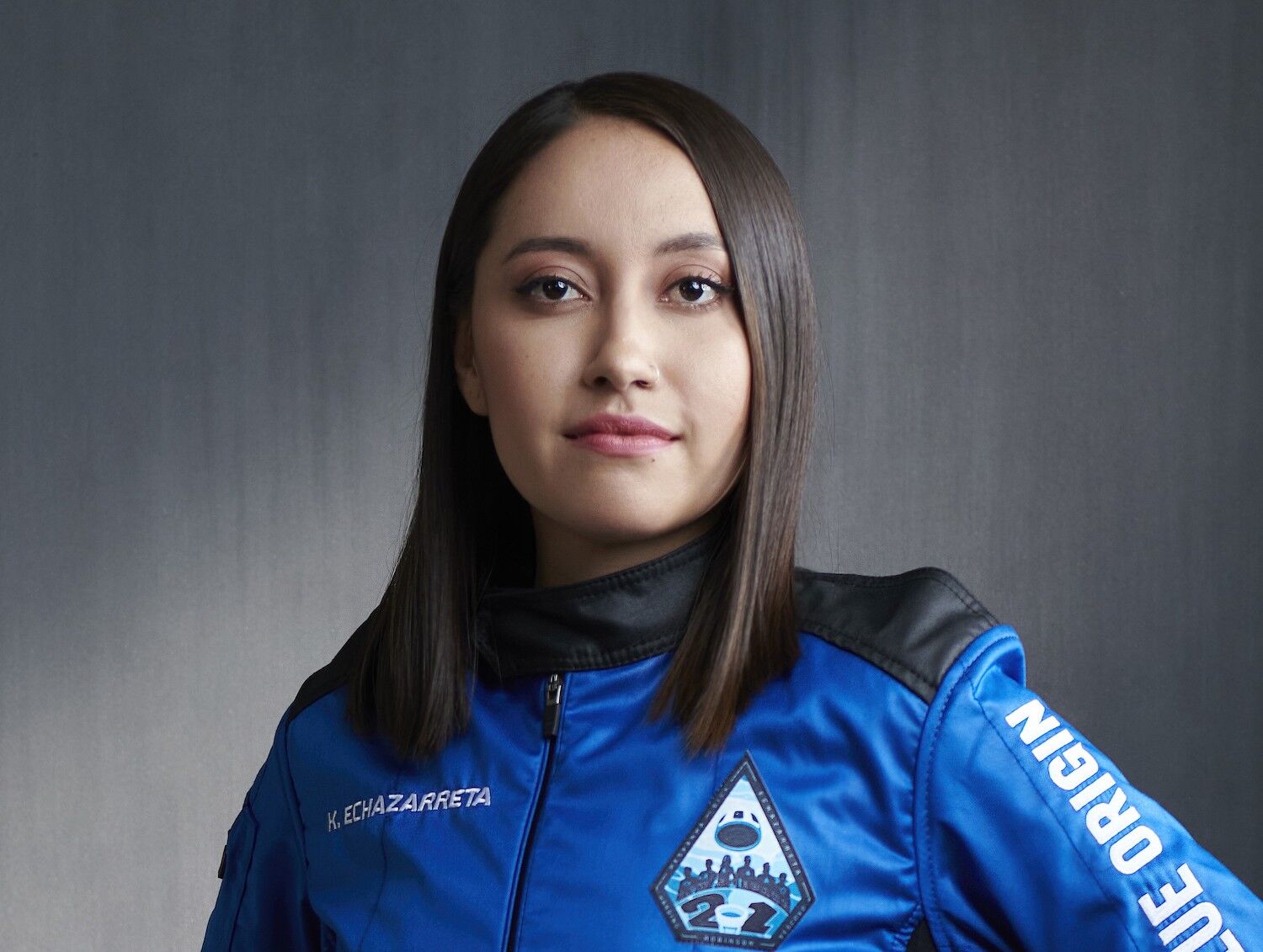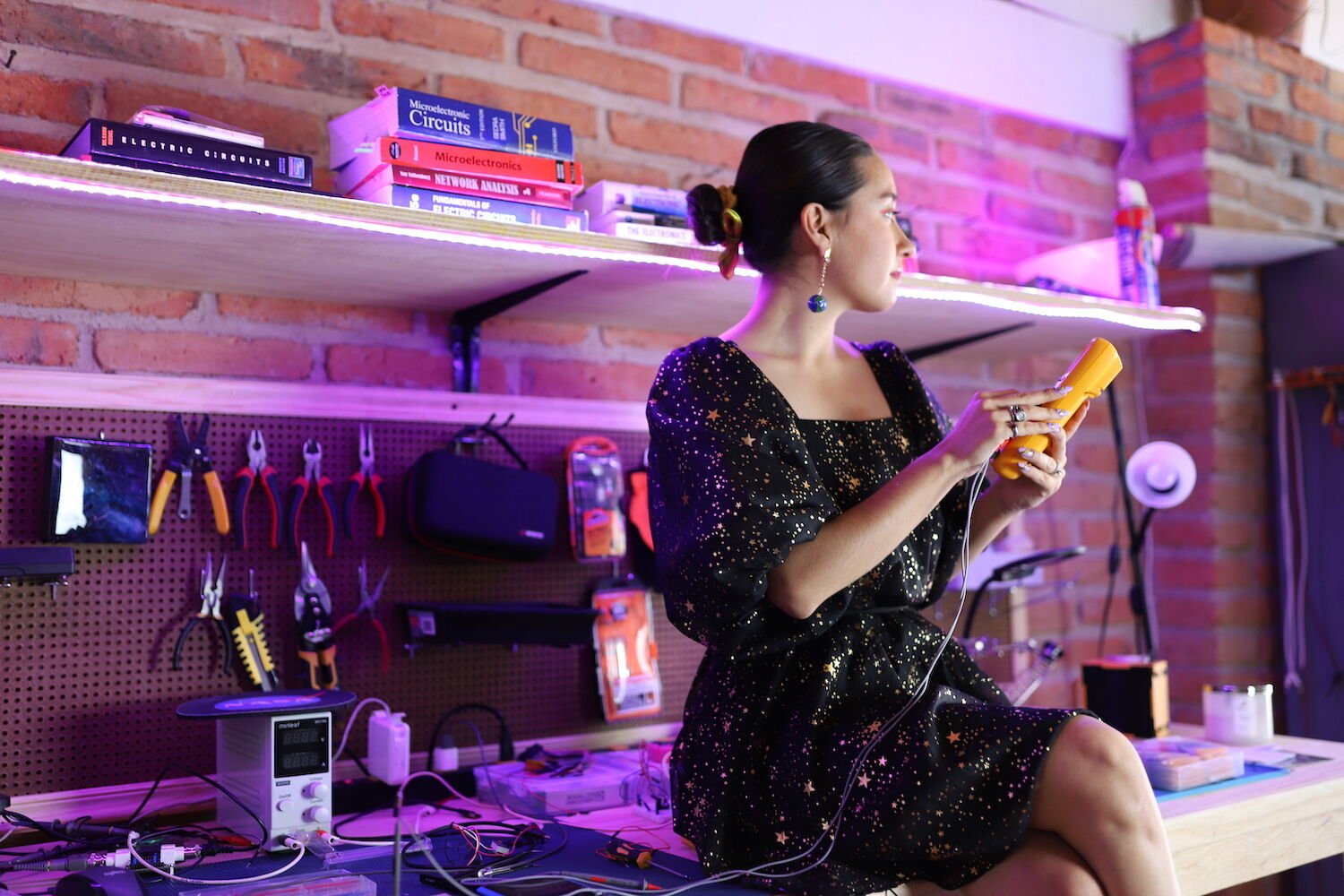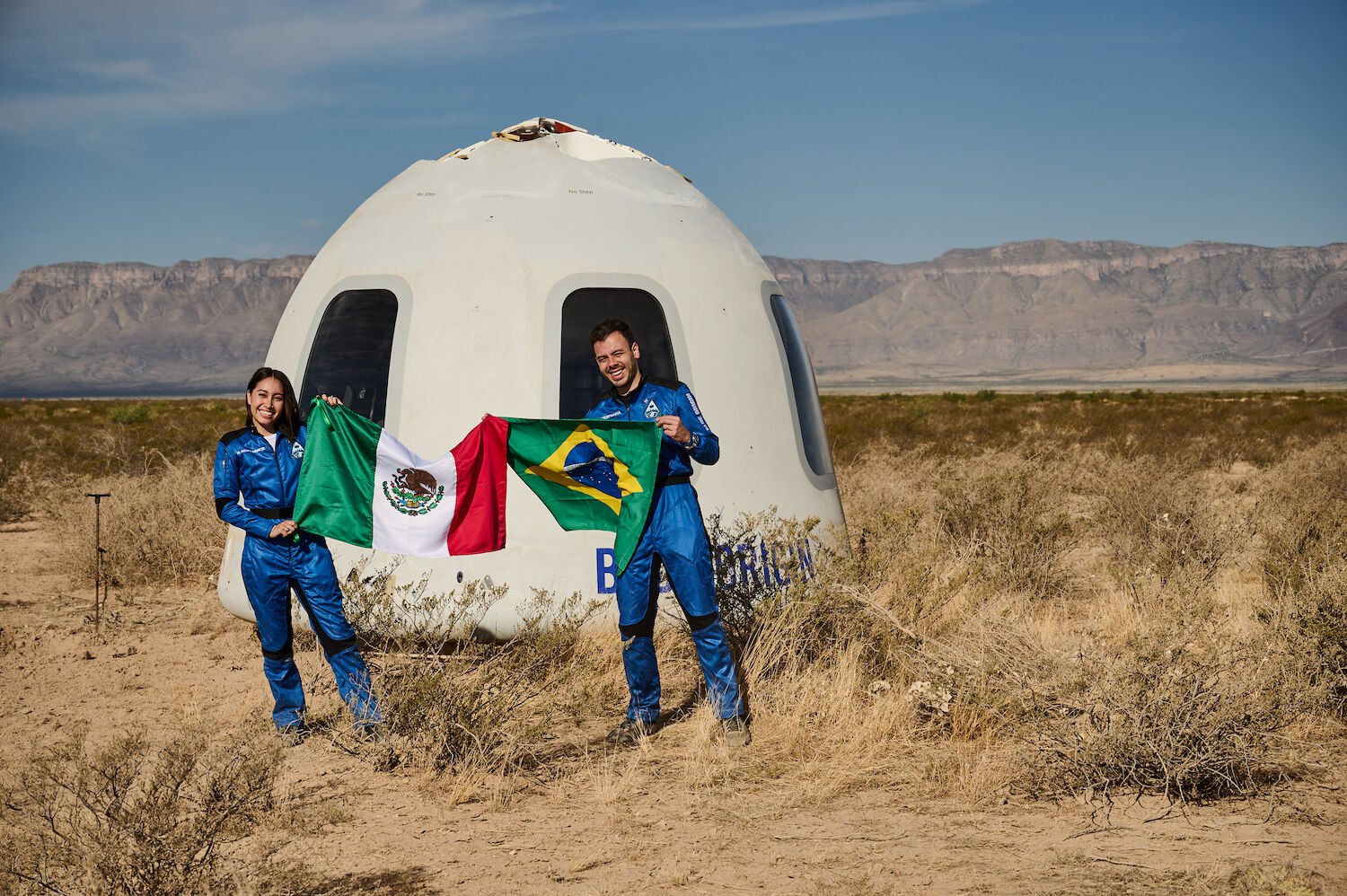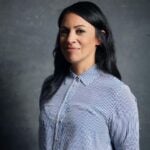
among the stars, kat
Courtesy of Katya Echazarreta
Scrolling Tiktok one night, I came across a video of a little girl watching her mom’s laptop. The child was only half-interested in what was being displayed, music from The Little Mermaid playing in the background.
And then, she stopped all activity and her tiny eyebrows raised. It’s subtle, but her surprise is there. A brown-skinned Ariel had appeared on screen and looked exactly like this little girl—a first for the classic character and the little girl watching it.
Next year, the live-action remake of the 1989 movie will feature an African American actress, Halle Bailey, as Ariel. It’s not only heartwarming, it’s historic. It took Disney 55 years before they introduced a non-white princess, and 70 years before a Black one made her debut in 2009. There are hundreds of these videos, with children lighting up over seeing themselves on the big screen.
This past June, 26-year-old Katya (Kat) Echazarreta made history when she became the first Mexican-born woman and the youngest woman to travel into space. A San Diego City College alumna and Chula Vista resident, she broke through the earth’s atmosphere aboard Blue Origin on behalf of Space for Humanity, a Denver-based space exploration interest group.
“I don’t really know how it started. I feel like maybe one person started it and then we all just sort of joined in, but every number that went down, we would get louder and louder and louder,” says Echazarreta recalling the moments before blast off.
When I first heard Echazarreta’s story, it reminded me of what I had experienced earlier that summer while watching the Jennifer Lopez documentary on Netflix, which chronicled her fight to be heard in the industry as a Hispanic woman. It’s the same feeling I had watching her halftime performance with Shakira at the Super Bowl in 2020.
I felt seen.
It matters that Echazarreta dons the cover of magazines; that her story is told over, and over, again. It matters that I write it as a first-generation American and Latina. For BIPOC people, our starting line is often 400 meters behind everyone else’s. But stories like hers, and the countless others who have accomplished the seemingly impossible, remind us that our goals—while harder and often requiring more work—are still obtainable.
Echazarreta’s time in space was quick, a total of 12 minutes from takeoff to landing; but her path to the stars took much longer.
Early Obstacles
“My first memory is coming to our first home in Tijuana, after we got off the plane,” says Echazarreta, who was born in Guadalajara, Mexico. “The house was empty, so my parents just put together a whole bunch of blankets and comforters on the floor… We all just huddled up on the blankets with our little airplane sandwiches.”
A few years later, when she was nearly eight years old, Echazarreta and her family moved to the U.S. They found a home in Chula Vista, where she remained through high school before attending San Diego City College.
She had always assumed she’d attend a four-year school and eventually end up in outer space. A driven child, she excelled in her studies. It was never a matter of if she’d go but rather, where. But her parents divorced that year, and the money was no longer there.
So, she did what is normal (and often culturally expected) in Hispanic families, especially for daughters: she put family first. She stayed local, supporting her mom and caring for her siblings. It was “an opportunity,” she recalls, to adjust her plans, but not to abandon them completely.
“From a very young age, [my mom] always led me to believe that I could do whatever I wanted—that it was really up to me,” says Echazarreta. “I just told myself, ‘Okay, you have an opportunity to go as far as you want to, so let’s take advantage of that.’”

“I am someone who has had to go through a lot of different things in order to get to where I am, not only financially and mentally, but also I’ve had to deal with a lot of things like racism and sexism,” says Echazarreta. “People who look at me and what I’m doing and automatically assume due to their own internal, unconscious biases that I have gotten there because of a certain type of handout.”
Courtesy of Katya Echazarreta
The College Years
Three years later, Echazarreta was accepted to UCLA in 2016 and continued her path toward an electrical engineering degree. But she quickly learned that what had come easy to her in the past would no longer be the case.
“One of the hardest things I had to deal with at UCLA [was that] I was average, and sometimes I was not even average. Sometimes I was lucky just to pass,” she says.
Her health and well-being quickly took a turn. She wasn’t sleeping, wasn’t eating well, and when she would spend 30 minutes in the cafeteria, she’d beat herself up for not using that time to get her grades up.
“You definitely reach these moments where you’re like, ‘Oh my goodness, for so long I thought this was going to happen. And yet, everyone in this room is ten times better than me, and I don’t know if I belong here,’” says Echazarreta.
She had a choice to make. Give up and settle for the status quo, or fight like hell to get to where she’s headed. She fought. She turned her GPA around from a 2.8 to a 3.8 by realizing she needed to prioritize her health
and mental well-being as much as she prioritized good grades. She slept, ate well, and regained her confidence again to pursue her goal: NASA.

Prior to Echazarreta, Mexico had only sent one other person into space. She is seen here with Victor Correa Hespanha, the second Brazilian to fly to space.
Courtesy of Katya Echazarreta
The Opportunity of Rejection
During her first summer at UCLA, she had wanted to apply for an internship with NASA but feared rejection. Though she did eventually try and wasn’t selected, her fears were confirmed. So, instead, she took a job at McDonald’s and acted as if she had been accepted. Following her daytime shifts at the fast food restaurant, she took on projects that would give her an edge over other candidates and learned all that she could about space in the evenings.
That fall, she began attending conferences to meet with recruiters and again applied to NASA for the JPL Summer Internship Program. It was around six months before she heard back. She recalls her interviewer giving her one critical piece of advice, regardless of whether she was accepted this round.
“He said, ‘You belong here at JPL,’” she says. “When I heard that, it just took everything in me to not immediately start crying because of… everything else that I had gone through with my family and community college, and feeling like I was crashing and burning at UCLA. So those words really just set me off for the rest of my career.”
She got in.
Reaching the Stars
After some time as an intern, Echazarreta transitioned into a full-time engineer for NASA. In 2022, she was chosen among 7,000 applicants to become Space for Humanity’s first “Citizen Astronaut.”
On June 6, her childhood dreams were finally realized as she zipped up her now famous blue astronaut suit and climbed aboard the New Shephard spaceship.
Three… Two… One…
“The rocket starts to vibrate underneath you and you see orange all around your windows,” she says of moving vertically through the sky. “It felt like a slow ride.” Of course, it’s actually only minutes long. You pass through the first set, then the next, then blue skies, and finally, darkness. You’re in space.
“You feel like everything’s upside down; your body is telling you everything’s upside down,” remembers Echazarreta. “Your blood is not flowing normally. And so it all kind of pools; it feels like it’s all pooling up in your head. So you kind of feel like you would when you do a headstand.” And when headed back to earth, our bodies weigh five times their normal weight—you’re paralyzed, only for a few moments. “I couldn’t even open my eyelids,” she shares.
When Echazarreta first started applying to NASA, she knew she wanted to embody representation for Mexican women, specifically. She knew that just because someone’s starting line was further back, it didn’t mean they’d already lost the race.
“I am someone who has had to go through a lot of different things in order to get to where I am—not only financially and mentally, but also I’ve had to deal with a lot of things like racism and sexism,” says Echazarreta. “People who look at me and what I’m doing and automatically assume due to their own internal, unconscious biases that I have gotten there because of a certain type of handout.”
She finishes our interview with a word of advice for anyone doubting that they can accomplish their goals, for those seeing the obstacles as dead ends rather than reroutes. And for those who are struggling through minimum-wage jobs while taking care of a family and working late nights to keep up their studies:
“Someone is going to get to be that singer. Someone is going to get to be that person that goes into space. So, it’s up to you, whether that someone is you or not.”



















